A commuting journey affects everyone’s day, so it is important that we start and finish everyone’s commute in a positive way. A ride on the metro can be very dull, almost an unconscious journey that we don’t really focus on too much. To change this daily routine, architects create fantastic interiors that can transit passengers into a truly new world and a celebration of design.

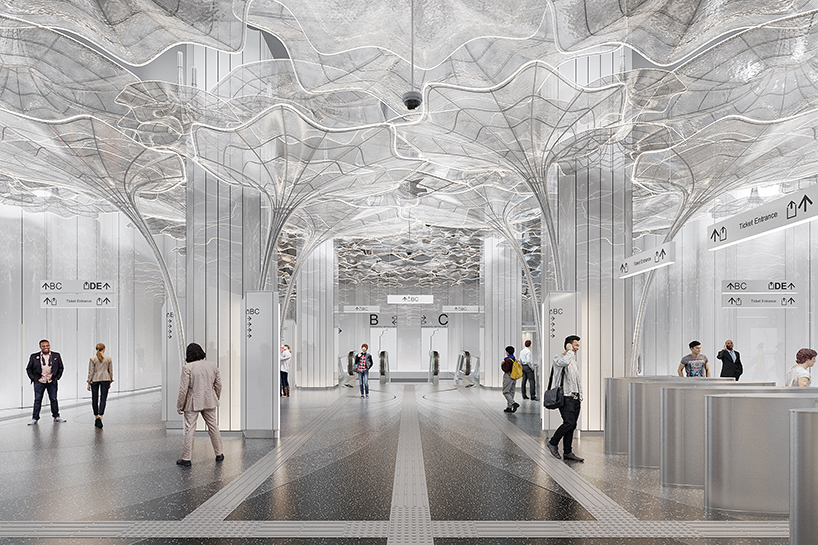
Flower Clouds by MASK Architects and J&A
MASK Architects with offices between Turkey and Italy and Shenzhen-based Jiang & Associates Design (J&A) have teamed up to develop the interior design of the Zhengzhou metro Line 7 stations.
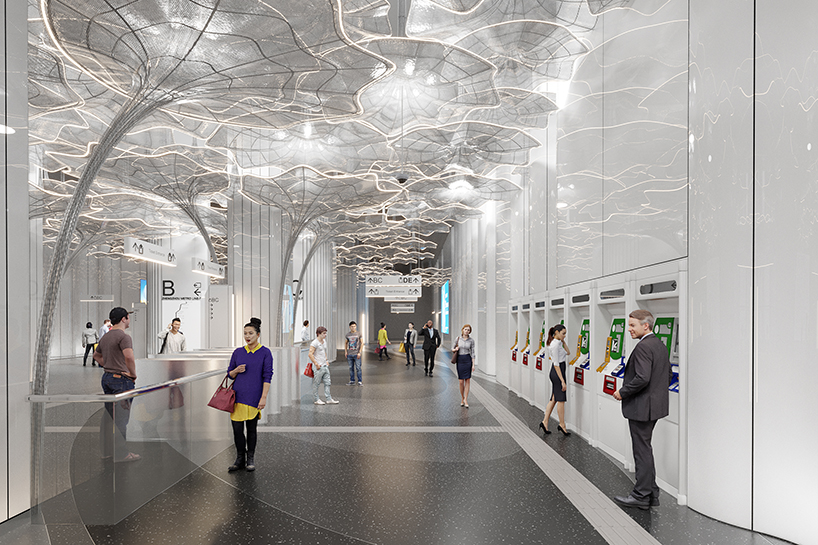
Flower Clouds by MASK Architects and J&A
Öznur Pınar Çer, Danilo Petta founders of MASK Architects say they were inspired by Nanhuan Park famous for its flowers and roses that attract people to come and take pictures of the beautiful natural landscape and environment.
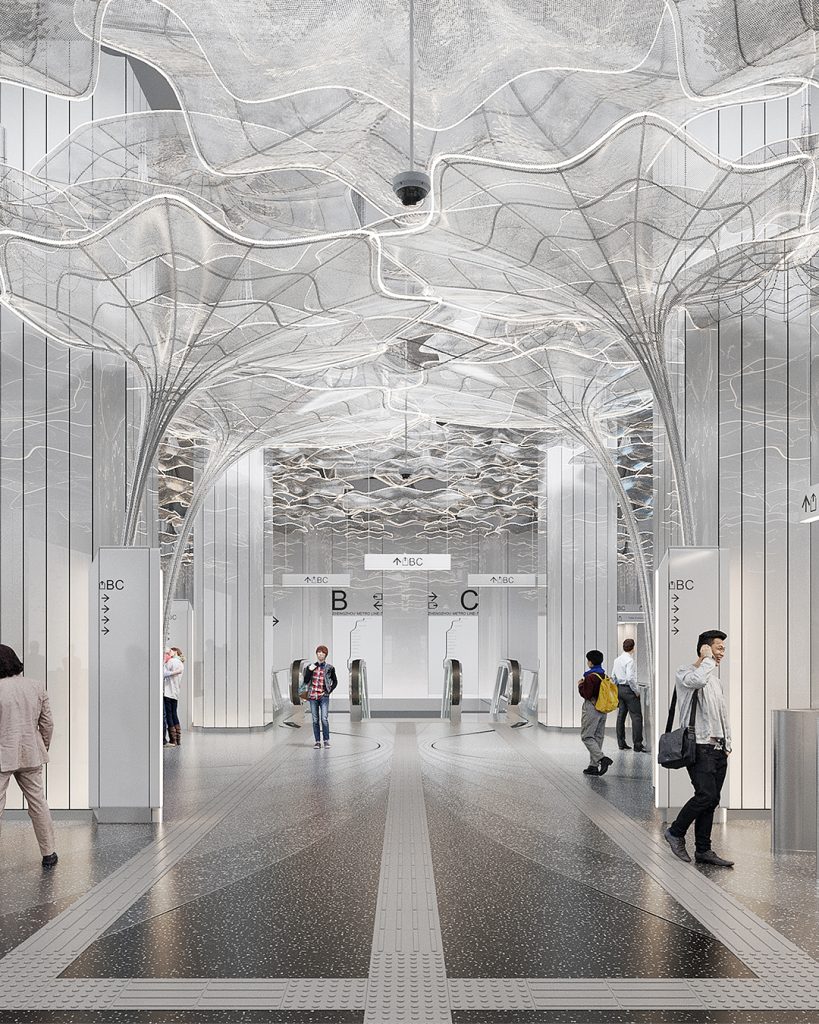
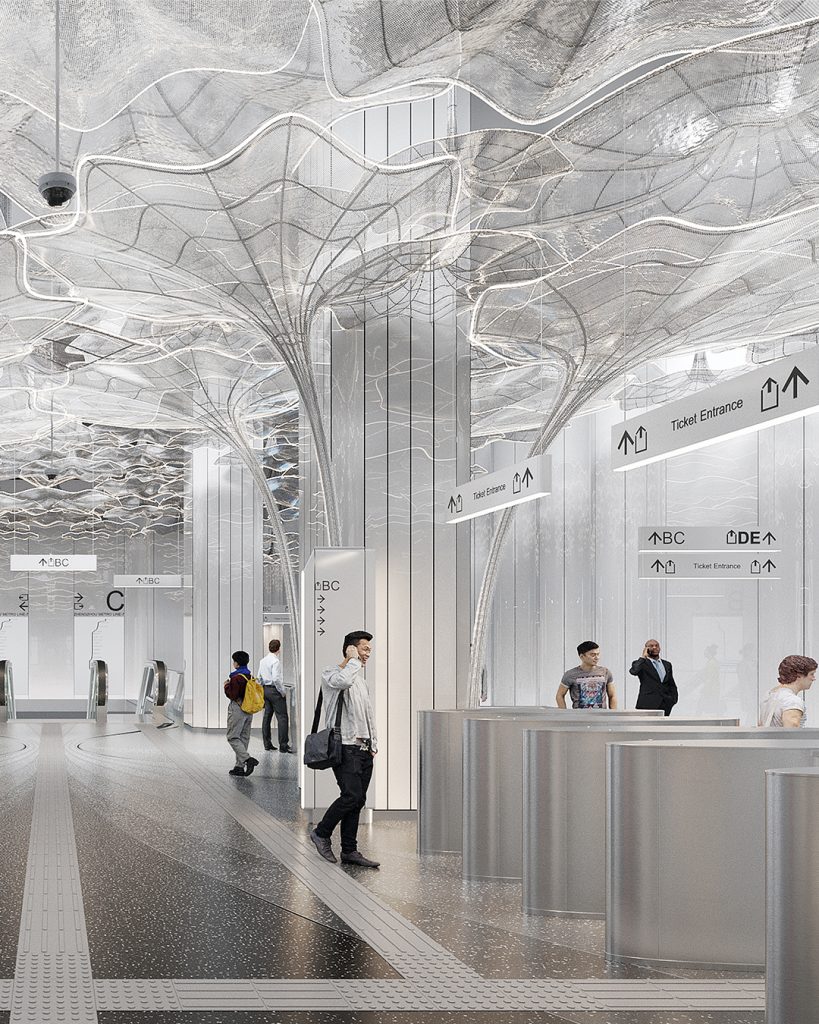
Flower Clouds by MASK Architects and J&A
Aiming to create the continuous flow from outside to the interior of the metro station, the team has come up with as an expandable, mobile, and modular set of flower-like structures that can be organized in various patterns for the commuters’ flows to be directed to their platforms. Replacing boring, mechanical elements with beautiful canopies transforms the transport hub into a more natural, flourishing, and refreshing space.

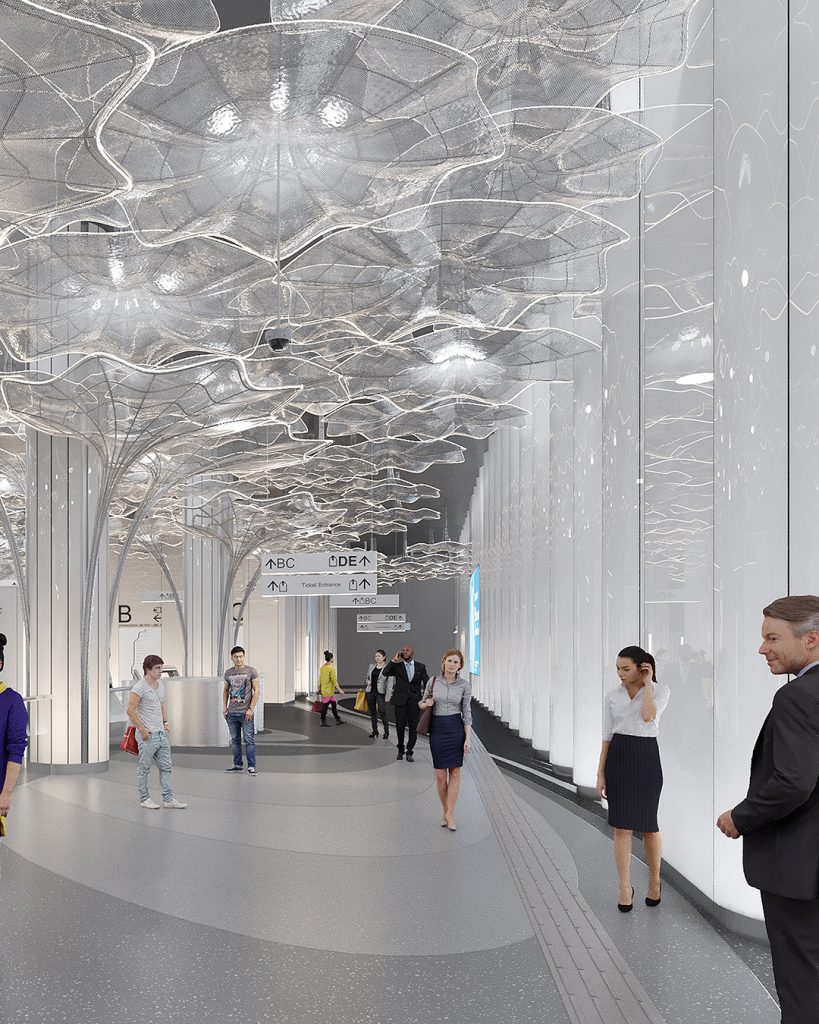
Flower Clouds by MASK Architects and J&A
Named Flower Clouds, the 3D bespoke structures will be built using 0.1 mm stainless steel mesh that is easy to mold and sculpt into different shapes and curves. Besides, this material allows to create transparency effects on leafs, branches and stems of the flowers, with lighting embedded in multiple sequences that will beam and pulsate across the ceiling, from petal to petal. This will enable commuters to feel like they are under the flowers and get a different perspective and view from under them.\

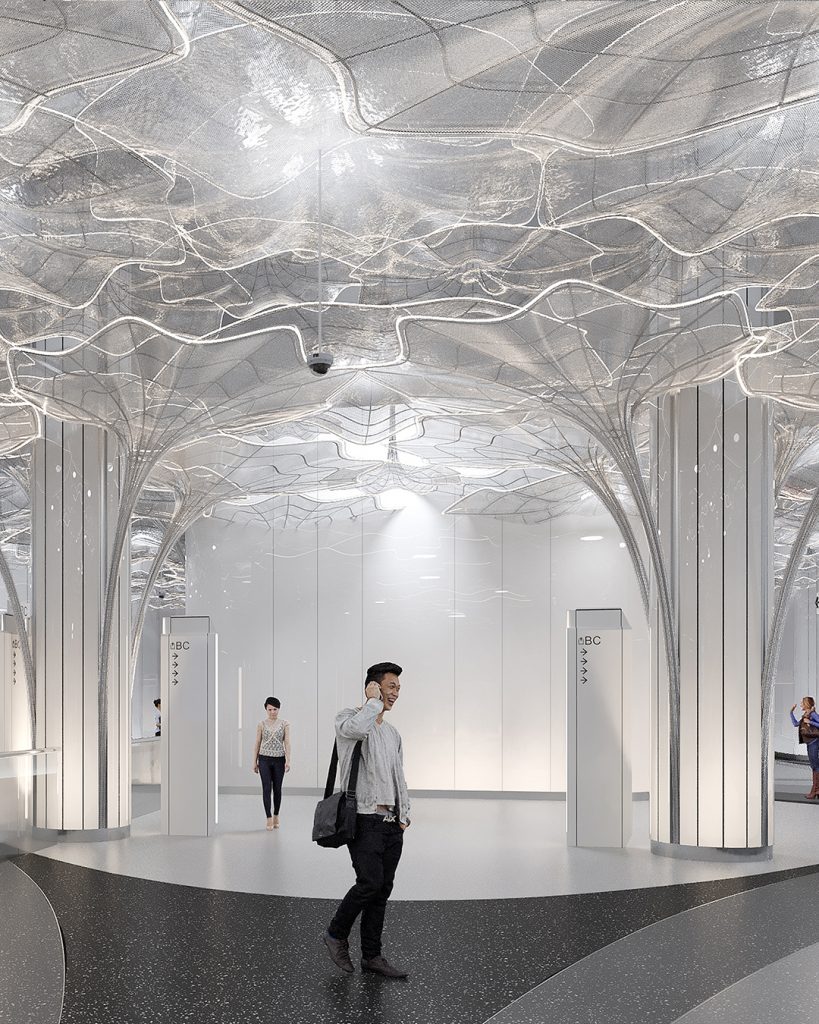
Flower Clouds by MASK Architects and J&A
The material used for the flooring is a gradient terrazzo pattern on vinyl complemented with patterns to direct the commuters throughout the metro station.
The station is under construction and is expected to be completed by 2023.

Yuyuan Station by Xing Design
Commissioned to design the interior of the Yuyuan Station on Shanghai Metro Line 14, New York based Xing Design has come up with a solution that reflects the character of the site, which is a cultural landmark and a gateway to this area and a starting point for tours.
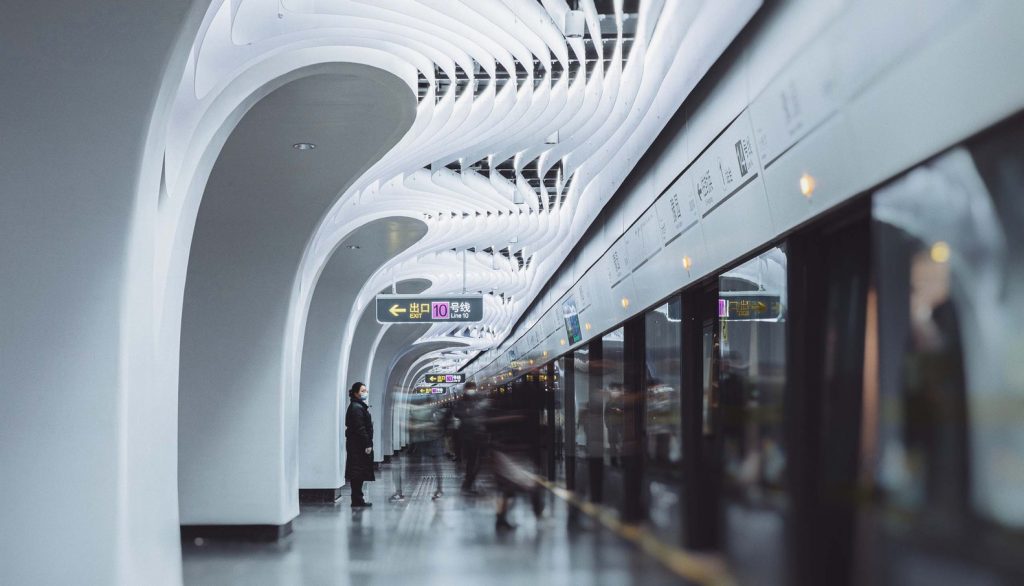
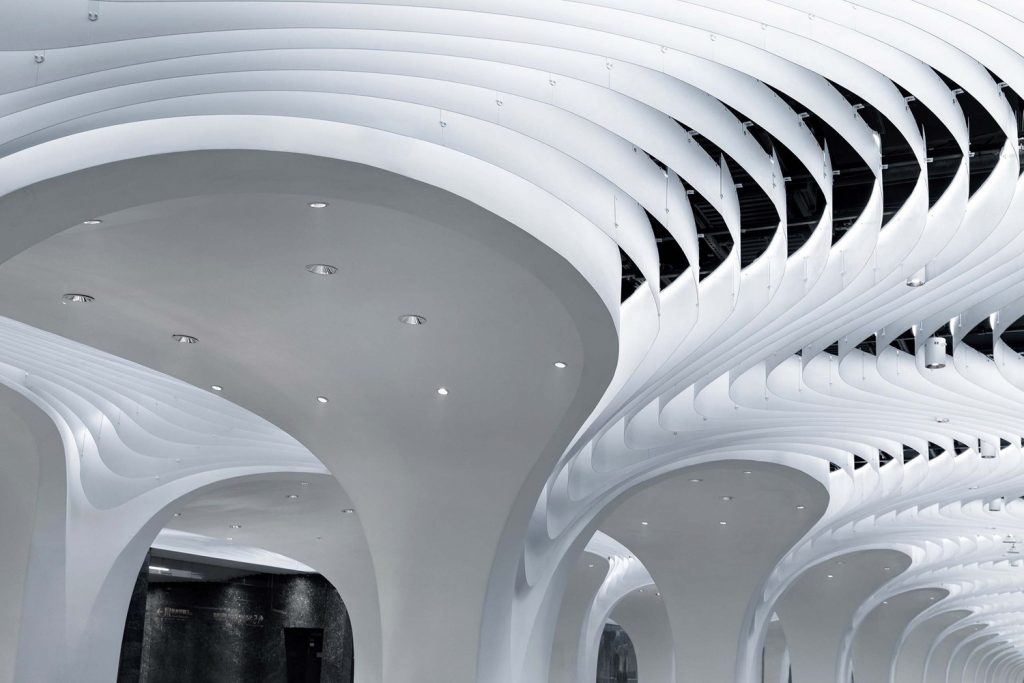
Yuyuan Station by Xing Design
As the Yuyuan Station is the deepest subway station in the city, the civil conditions such as walls, columns, and floor layers cannot be changed, which brings challenges to the interior design. The main design focus of the space is the curved ceiling made of tens of thousands of aluminum panels, cut, bent, and spliced. Intended to resemble the flow of the Huangpu River above this metro line, these manmade ‘waves’ seem to lap onto the columns, creating a rhythmic pulsation. The team explains, “If the subway is compared to the arteries of the city of Shanghai, then at Yuyuan, the deepest station, it is as if you can feel the pulse of the city.”


Yuyuan Station by Xing Design
While architectural spaces can be transfigured by the natural sunlight, underground space relies entirely on artificial lighting. The ceiling system of the Yuyuan station features integrated LED lighting to form a large three-dimensional canopy that can present a variety of light effects – and even light shows – for holiday events, such as a China-Red for the National Day and the Spring Festival, or pink and flower petals for Valentine’s Day.

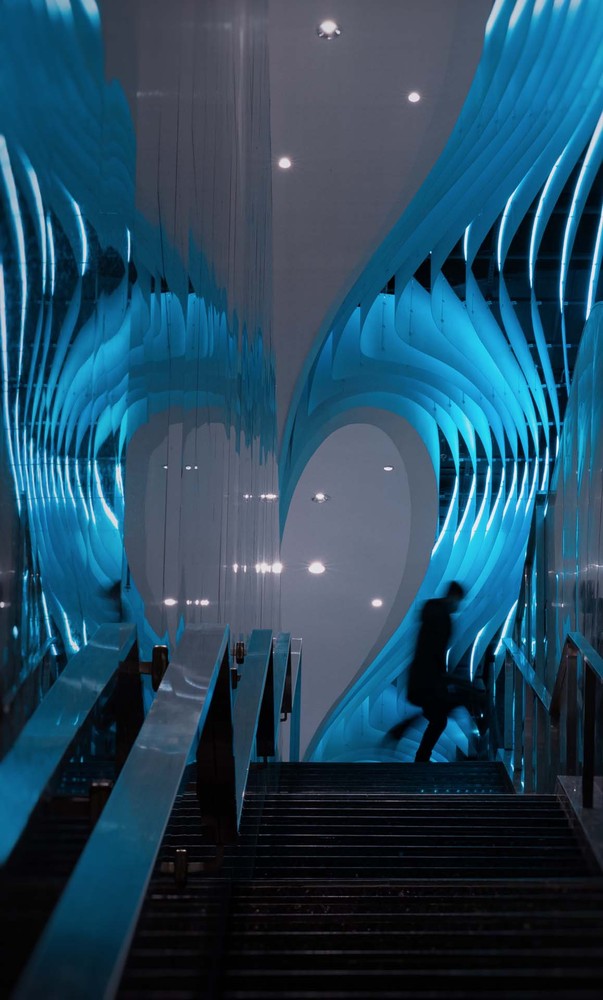
Yuyuan Station by Xing Design
The floorplan is organized to accommodate the track splitting and merging, and the distribution of ceiling pipes in the station hall is not homogeneous either. Parametric design technology is adapted to generate forms and optimize the number of non-standard units, in order to minimize the cost of mass production and installation.
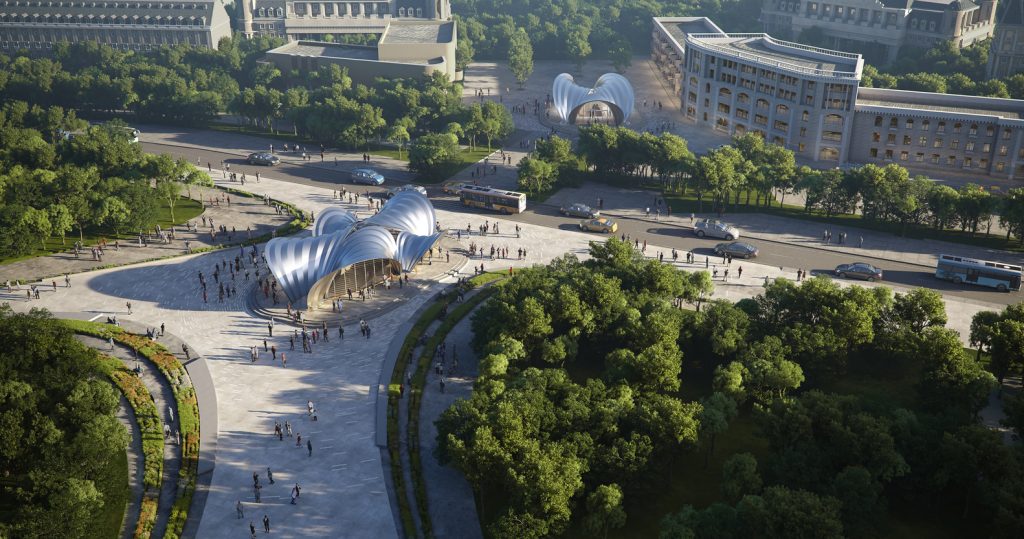
Dnipro metro stations by Zaha Hadid Architects (also header image)
The renowned architecture firm Zaha Hadid Architects has designed three new metro stations for the city of Dnipro, Ukraine. The Teatralna, Tsentalna, and Muzeina stations will connect the residential, commercial, cultural, and academic institutions in Dnipro’s eastern districts with the city center and the Dnipro-Holovnyi railway station.
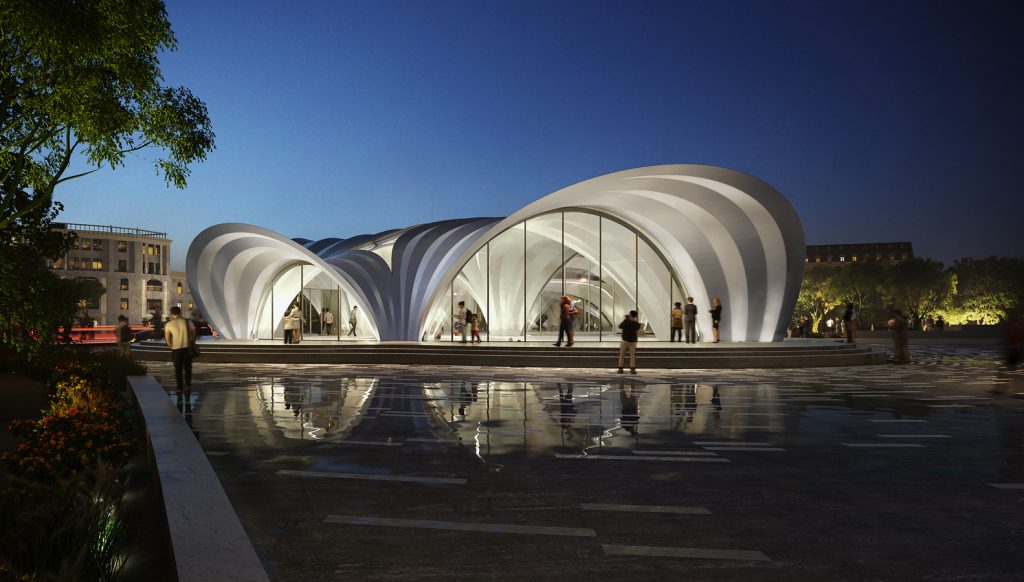

Dnipro metro stations by Zaha Hadid Architects
The interiors are designed to facilitate circulation and navigate passengers in an intuitive manner, enhancing their experience to ensure safe and comfortable transport across the city. The design of the stations honors the city’s rich traditions of craftsmanship, metallurgy, and manufacturing through the welded steel entrance pavilions.
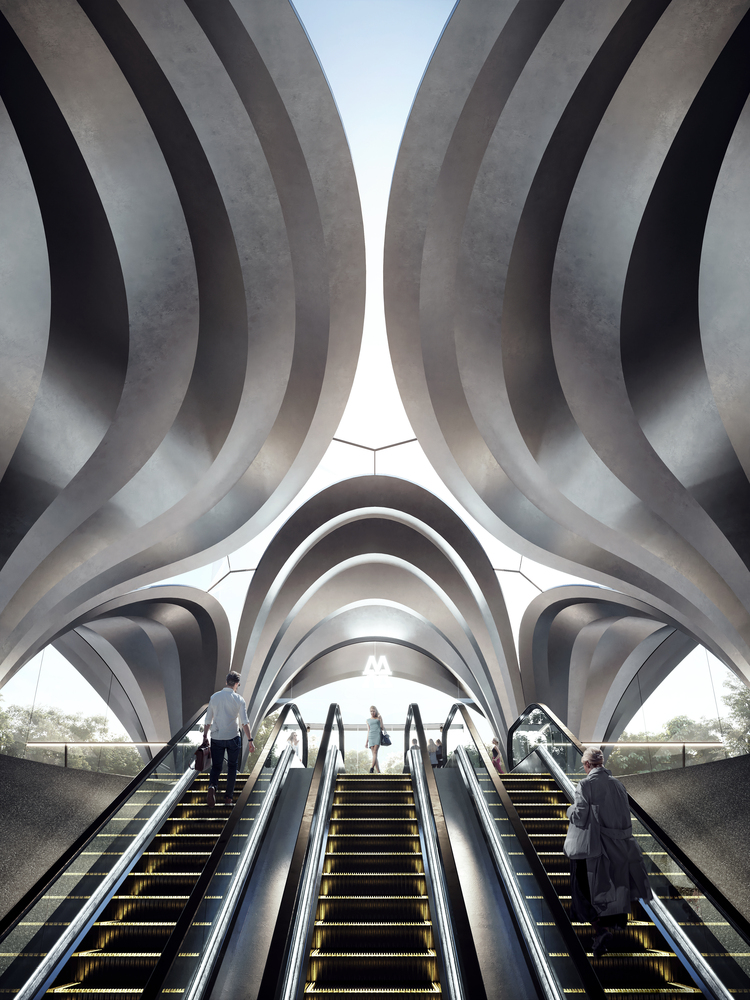
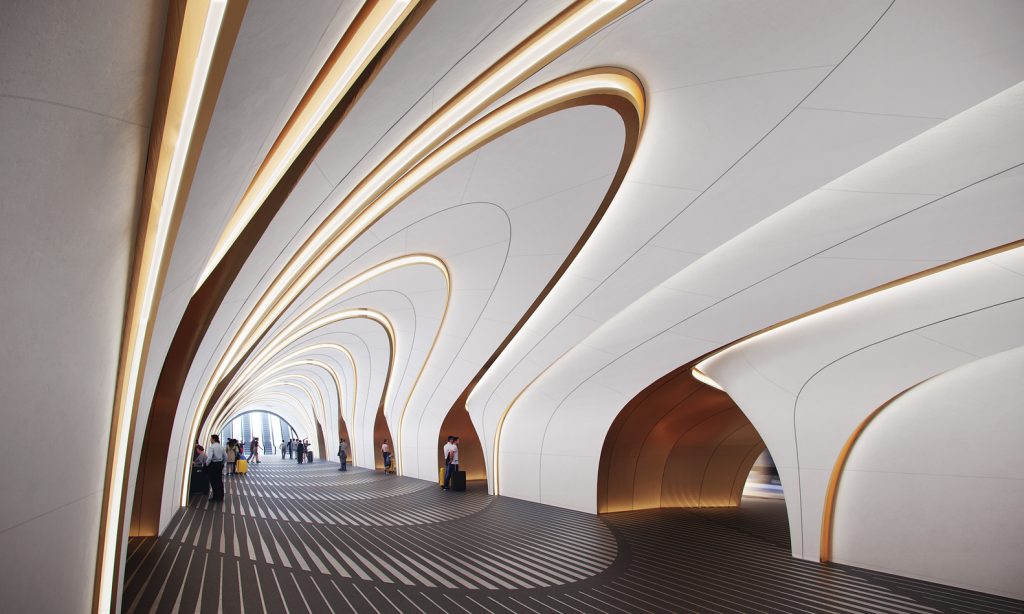
Dnipro metro stations by Zaha Hadid Architects
These sculpted entrances comprise of thin structural shells made from recycled steel from Dnipro’s local foundries. Each pavilion is situated within a new public plaza, providing an easily recognizable landmark that marks an access to the city’s metro. To further enhance the station’s strong identity, the design of the ticket halls uniquely compliment each station while the interior concourses, corridors, and platforms that share a cohesive formal and spatial logic.